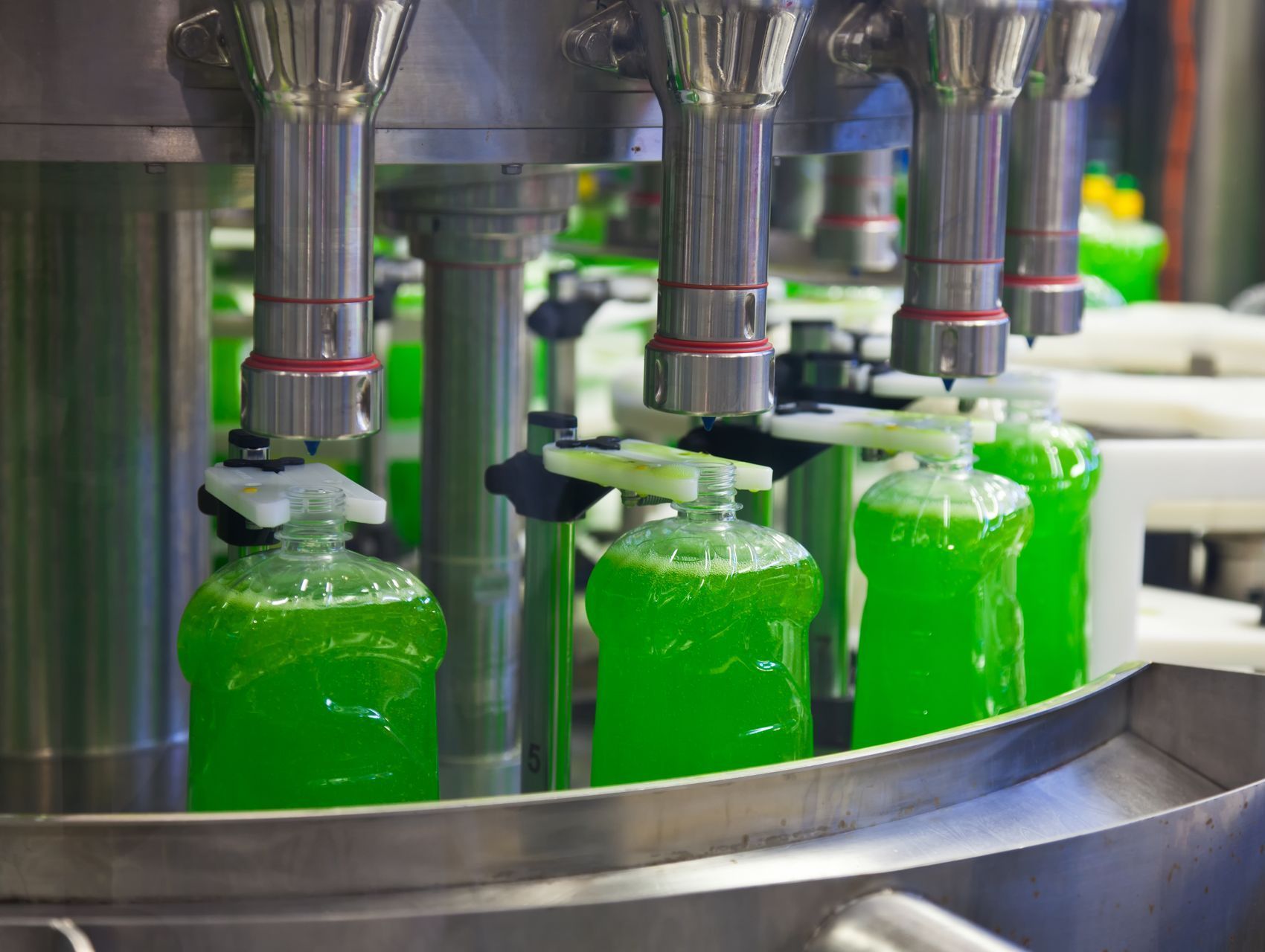What is a Green Solvent & Are They Helpful?
October 19, 2023

Solvents are formulated to dissolve other substances. They are often liquids but can also be gasses, solids, or supercritical fluids. Examples of products that often use solvents include:
- Nail Polish Remover
- Glue Solvents
- Paint Thinner
- Detergents
- Spot Cleaners
They’re helpful because they get out those otherwise pesky stains or dissolve that film that nothing else will get off. Green solvents can do all of those things, but the difference is that they’re made with soybean derivatives, citrus, corn, and other sustainable resources. This makes them a great choice when it comes to working effectively while also minimizing your industrial carbon footprint.
What Are Green Solvents?
Eco-friendly green solvents are used in various industrial applications helping to minimize their environmental footprint. These solvents are deliberately formulated to achieve two primary objectives: reducing toxicity and conserving energy resources.You’ll know it’s a green solvent if it checks these boxes:
- Non-toxic or Low Toxicity
- Low Environmental Impact
- Sustainable
- Low VOCs
- Biodegradable
When a solvent is labeled as non-toxic, it means that it poses a lower risk of causing issues for people who work with it. Bio-based solvents are designed to have a lower impact on the environment, and many come from renewable resources. That means a lower reliance on fossil fuels, which is a win-win for suppliers.
As a result of their composition, bio-based solvents are also biodegradable and break down into harmless substances, naturally reducing pollution. Their design also lends itself to a lower volatility, meaning fewer emissions are released into the atmosphere.
Traditional Solvent vs. Green Solvent
Traditional solvents and green solvents do the same jobs, but they’re different in some significant ways. For example, when it comes to environmental impacts, traditional solvents are typically negative for the environment because of how they contribute to pollution and groundwater contamination. Green solvents are created to increase eco-friendliness by being biodegradable and reducing pollution.
Traditional solvents also pose a significant toxicity problem. They threaten the health of humans, animals, and the environment. Green solvents, on the other hand, are less harmful to people, pets, and the outdoors, making them a much better option.
Solvents can also come from a variety of sources. Traditional solvents come from fossil fuels, whereas green solvents are made from renewable resources. The overall effort to reduce reliance on fossil fuels further encourages sustainability.

Energy efficiency is another major player in the production of solvents. Traditional solvents usually require higher energy needs with the negative consequence of associated greenhouse gas production. Green solvents actually require less energy to make and use, and as they are also environmentally friendly, greenhouse gasses are not an issue.
One of the other issues that come into question when comparing traditional solvents with green solvents is regulation and compliance alongside cost. If you've used conventional solvents before, you probably know how strict the rules are for using and getting rid of them in your industry. Adhering to these regulations can also result in increased expenses for your business. However, green solvents are more user-friendly in this regard as they inherently align with most regulations, simplifying the process of meeting regulatory requirements. So, while green solvents may be more expensive up front, they are far more cost-effective in the long run.
How Are Green Solvents Beneficial?
Green solvents are beneficial in many ways. Some of the benefits include:
- Eco-friendly
- Non-toxic or have low toxicity
- More sustainable
- Not contributing to greenhouse gas emissions
- Better for worker health and reducing chemical exposure
- Energy-efficient
- Driving innovation and research in sustainable technologies
- Better for your wallet in the long term
- Naturally reducing reliance on finite resources
Ultimately, they’ll address many of the existing environmental concerns across a variety of industries while encouraging alignment with sustainable principles.
Transitioning to Green Solvents
Transitioning from traditional solvents to green solvents doesn’t have to be difficult, and if you take a systematic approach, it will be easy to help your customers or clients make the change.
You’ll want to have them start by assessing the current solvents that they use. Be sure they note the types, quantities, and processes so they can see where changes need to be made. You can then identify green alternatives that would work for their particular applications. They should also conduct compatibility testing to make sure other solvents don’t have an adverse reaction to the new addition.

Remind them to evaluate health and safety implications whenever they transition to new solvents. This includes updating exposure information provided to employees, in addition to any new safety procedures that need to be updated as well.
Once decisions have been made, you may need to assist in training their personnel so they handle the storage and disposal appropriately. While green solvents are much safer, there are still procedures that must be followed as per regulatory requirements.
Suppliers and scientists also constantly
evaluate performance to see if there are any improvements as a way to always stay on top of progress and changes to regulation requirements.
Applications for Green Solvents
Green solvents have the same applications as traditional solvents to include:
- Cleaning
- Degreasing
- Coatings and Paint
- Sealants
- Adhesives
- Extractions
- Food and Beverage Processing
- Agrochemicals
- Printing Inks
- Electronics Manufacturing
- Cosmetics
- And more!
With advancing technology, making environmentally friendly green solvents can be good for the environment and the safety of workers. Vertec has its own line of products that include different green solvents, each designed for specific tasks. Whether you need to clean off asphalt or make paint, there's a green solvent that can do the job safely and with less harm to the environment.
Choose a Reputable Green Solvent Supplier
When you’re ready to discover the next generation of
industrial cleaning solutions with Vertec BioSolvent’s bio-based products, you’ll see how our innovative formulations prioritize environmental sustainability and meet the demands of modern industries. As you
work to become the best supplier, remember that we offer eco-friendly solvents that are effective cleaners. We think you’ll agree that Vertec BioSolvents redefines industrial cleanliness with effective bio-based solvents. Contact us for more information or to ask questions you might have.


